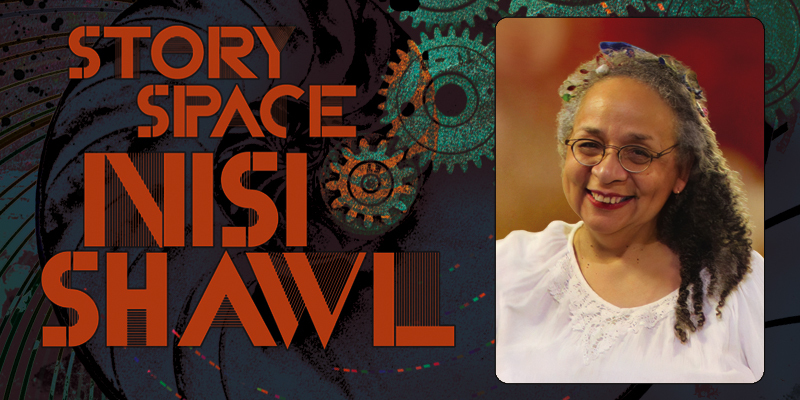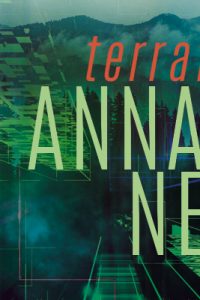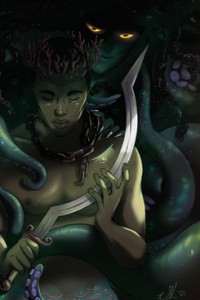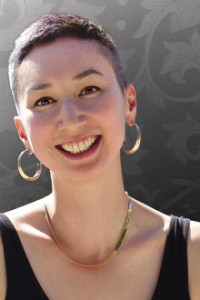Nisi Shawl: Story Space

DENISE ANGELA SHAWL was born November 2, 1955 and grew up in Kalamazoo MI. (Their cousin Delores came up with the nickname “Nisi.”) At 17, Shawl moved to Ann Arbor to attend the University of Michigan. After leaving the university, Shawl worked as a bookseller, au pair, cook, janitor, and artist’s model. Shawl settled in Seattle in 1996, worked on publicity for Clarion West, and currently serves on the workshop’s board. Shawl also cofounded the Carl Brandon Society.
Shawl’s first published story was “I Was a Teenage Genetic Engineer” in Semiotext(e) SF (1989), and they began publishing steadily in the ‘90s, after attending Clarion West in 1992. Notable stories include Gaylactic Spectrum Award finalists “Shiomah’s Land” (2001) and “The Tawny Bitch” (2003); Carl Brandon Award finalists “Wallamelon” (2005) and “Black Betty” (2013); World Fantasy Award-nominated novella “Good Boy” (2008); and Sidewise Award finalist “Sun River” (2017).
Collection Filter House (2008) was also a World Fantasy finalist, and won the James Tiptree, Jr. Memorial Award. Shawl was guest of honor at feminist SF convention WisCon in 2011 and, in conjunction with the convention, Aqueduct Press published their story and essay collection Something More and More. PM Press produced collection Talk Like a Man (2019) as part of its Outspoken Authors series. Their newest collection, Our Fruiting Bodies, was published in 2022.
Shawl’s debut novel, alternate history Everfair (2016), was a Nebula Award finalist. A new novel, middle-grade fantasy Speculation, was published in February 2023.
Their first book was non-fiction volume Writing the Other: Bridging Cultural Differences for Successful Fiction, cowritten with Cynthia Ward, and Shawl has taught many classes and workshops on that subject (and others). They have also published numerous essays and book reviews, including for The Seattle Times.
Shawl edited The WisCon Chronicles 5: Writing and Racial Identity (2010) and Bloodchildren: Stories by the Octavia E. Butler Scholars (2013), and coedited Strange Matings: Science Fiction, Feminism, African American Voices, and Octavia E. Butler with Rebecca J. Holden (2013) and Stories for Chip: A Tribute to Samuel R. Delany with Bill Campbell (2015). Anthology New Suns: Original Speculative Fiction by People of Color appeared in 2019 and won World Fantasy, British Science Fiction Association, Ignyte, and Locus Awards. Follow-up New Suns 2 is out in March 2023, and is reviewed elsewhere in this issue.
In 2019, Shawl was awarded the Kate Wilhelm Solstice Award by SFWA, honoring their contributions to the field.
Excerpt from the interview:
“The anthologies that most influenced me are probably going to be completely unknown to today’s audience. There was Women of Wonder, anthologies edited by Vonda N. McIntyre and Ursula K. Le Guin. There is one called Two Views of Wonder where they had male authors and female authors writing stories based on the same premises – again, it was this kind of binary thing. My most recent reread of an anthology is Interfaces, edited by Le Guin and Virginia Kidd. It has the first appearance of Harlan Ellison’s ‘Shattered Like a Glass Goblin’, and one of my favorites by D.G. Compton, a really mean-spirited story called ‘Bender, Fenugreek, Slatterman and Mupp’. It begins with: ‘It was Wednesday, physical fulfillment day.’ Nobody thought that story was important when it came out. That was an unthemed anthology, just, ‘Here are some good stories.’ That may have been behind my decision to go with ‘these are just good stories’ for the original New Suns.
“The key to putting together an excellent anthology is knowing a lot of people, so it gets back to that same old thing: who you know. I have been a volunteer and on the board of Clarion West for the last few years, which not only helps me understand and connect with a bunch of upcoming writers, but has also helped me connect with people at Clarion and Odyssey and Viable Paradise. I taught at Viable Paradise; and that’s where I met Zin Rocklyn. Being in touch and knowing, ‘Yeah, this person will surprise me,’ or, ‘This person will have something that will need editing, but it will be really far-reaching in its implications,’ helps.
“I don’t think there has been much change in the industry’s representation of minorities since New Suns came out in 2019. The change that see has taken place over decades, not over just a couple of years. New Suns 2 serves sort of the same purpose as the first volume. It has this effect of reaching out to readers and saying, ‘You can try all this different stuff, and if you like this, you can look for more John Chu, you can look for more Geetanjali Vandemark, you can read a novel by Darcie Little Badger….’ If you have sampled something short, you can then extrapolate that you will like something longer.
“People who say that they don’t like short fiction piss me off and puzzle me. It’s like people who say they don’t like kids – you were a kid, so how could you not like them? I’m not saying that everyone was a short story fan, but when you started out reading, you were reading picture books, so you were reading short fiction. Why are you through with it now? I don’t get that.
“I have changed, myself, of course, in the length of things that I’ve written. I began as a poet, doing very short work – sometimes three or five lines. Then I ‘graduated’ – as they say – to short fiction. Now I’m writing longer-form fiction; my current project is a novella. But I’m still writing short fiction as well. On January fourth I finished a short story, and I’m now in the last pages of a novella. I told Margaret Atwood why I hadn’t written novels earlier: ‘I wasn’t the same person long enough.’ Time flows differently as you age, and when I was in my twenties, I could be the same person long enough to write a poem. In my thirties and forties, I was the same long enough to write a short story. Now, in my fifties and sixties, I can stay the same long enough to write a novel – I hope. What’s next, a series maybe? I don’t know. I am supposed to be writing a sequel to Everfair… the thing that I’m writing might be a sequel?
“One of my favorite pieces of short fiction is ‘Auk House’ by Clifford D. Simak, and to me, the ideal piece of short fiction does what that story did to me: it sort of creeps up over your shoulder as you’re reading it, and then seizes you, flips you 180 degrees one way, 360 degrees another, and then another 180, and sits you back down in your chair. At the end, you’ve been changed, and everything around you is different, and you’ve seen the world through all these contrasting perspectives. That’s what good fiction does: it gets to you, and changes you, and changes the world that you’re in. Our Fruiting Bodies will sneak up behind you, read over your shoulder while you’re looking at it, and flip you around several different ways in the air and sit you back down with something changed. That’s what I want – that’s what I hope people get out of it, and that was my intention in putting it together.
“I think short fiction is more relevant – it’s more cutting-edge than novels. Novels follow the trail that is blazed by short fiction. Short fiction is just this strange new thing happening in your head, happening on the page before you, happening in tandem with whatever’s happening for the creator, or the reader. Short fiction is a group project, and I wish people would pay more attention to it.
“Kurt Vonnegut compared the short fiction market for mainstream literary works to television, and thought that television had taken over where short fiction left off – that TV had siphoned away the interest in short stories. There’s something to that in terms of the time and effort that you put into reading a short story versus reading a novel. The short story is more like an episode of Special Victims Unit. It takes you 30-40 minutes to read it, while it takes a few days or a week to read a novel.
“There are advantages and disadvantages to appearing in an anthology versus a magazine. In some ways you have more visibility, and in some ways you have less. If you’re in an anthology, you probably have a longer shelf life than if you’re appearing in a magazine, for that particular work. You also get all the attention that goes to your colleagues in the table of contents. On the other hand, if you’re in a magazine, you’re more likely to be in a digital format, which makes it much, much easier for word of mouth to say, ‘You gotta check out this story; you gotta nominate this piece.’ So it’s six of one, half a dozen of the other.
“I have been very fortunate in cover art. In June there will be a new edition of Everfair with an introduction by Cadwell Turnbull – who, by the way, is not in either New Suns, dang it! – and that one is beautiful. The cover for New Suns 2 is just gorgeous; it’s by the same person who did the original one. There are two characters, two subjects; categories of femme and butch are kind of messed around and smeared between the two of them. For Our Fruiting Bodies, the cover is a photo of a fruiting body of a slime mold – I love slime molds! It’s from Barry Webb, who photographs tiny, tiny, tiny fungi. I follow Barry Webb on Instagram. Also Alison Pollack, who goes by the handle @marin_mushrooms – I thought of using one of her photographs, as well. That stuff is real and, to my mind, just gorgeous, but some people find it a little sinister.
Interview design by Francesca Myman
Read the full interview in the March 2023 issue of Locus.
 While you are here, please take a moment to support Locus with a one-time or recurring donation. We rely on reader donations to keep the magazine and site going, and would like to keep the site paywall free, but WE NEED YOUR FINANCIAL SUPPORT to continue quality coverage of the science fiction and fantasy field.
While you are here, please take a moment to support Locus with a one-time or recurring donation. We rely on reader donations to keep the magazine and site going, and would like to keep the site paywall free, but WE NEED YOUR FINANCIAL SUPPORT to continue quality coverage of the science fiction and fantasy field.
©Locus Magazine. Copyrighted material may not be republished without permission of LSFF.








